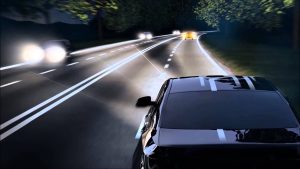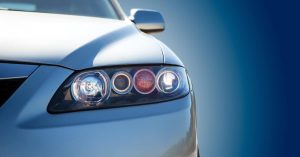Automotive lighting is more than just a design feature or visibility aid — it’s a critical safety component governed by strict regulations around the world. Whether you’re replacing a headlamp, upgrading to LED bulbs, or modifying your vehicle’s appearance with aftermarket lighting, understanding lighting laws is essential to stay safe and avoid fines or inspection failures.
In this article, we’ll break down the key aspects of automotive lighting regulations, what they mean for everyday drivers, and how to ensure compliance in your country or region.
Why Automotive Lighting Regulations Matter

Lighting affects your visibility and how well other drivers can see you. Improper or non-compliant lighting increases the risk of accidents, especially in low-visibility conditions like fog, rain, or nighttime driving. Regulatory bodies like the UNECE, FMVSS, and EU Commission create lighting standards to:
-
Ensure driver safety
-
Reduce glare and visual confusion
-
Maintain uniformity across regions
-
Promote energy efficiency
Key Regulatory Bodies by Region
| Region | Regulatory Body | Standard Example |
|---|---|---|
| United States | NHTSA / FMVSS | FMVSS 108 |
| European Union | UNECE (ECE Regulations) | ECE R112, R87, R48, R10 |
| Canada | Transport Canada | CMVSS 108 |
| Australia/NZ | ADR (Australian Design Rules) | ADR 13/00, 46/00 |
| Asia | Country-specific (e.g., JASIC Japan) | JIS Standards |
Each of these bodies has its own compliance criteria for beam patterns, light intensity, bulb types, installation height, color temperature, and even light switch behavior.
Common Lighting Requirements and Restrictions
While laws vary slightly by region, most countries agree on some core lighting standards:
What’s Typically Required (Globally)
-
Two working headlights (low and high beam)
-
Two tail lights
-
At least one rear fog light (often mandatory in Europe)
-
Brake lights that intensify when braking
-
Turn signals (amber or red, depending on region)
-
A center high mount stop lamp (CHMSL) or third brake light
-
Properly functioning license plate illumination
What’s Often Restricted or Illegal
-
Blue or red lighting on civilian vehicles (reserved for emergency services)
-
Flashing or strobe lights on non-emergency cars
-
Overly bright LED/HID retrofits that don’t meet beam focus requirements
-
Underglow or neon lighting visible from the front or rear (in many areas)
-
Improper light temperatures (e.g., excessively blue or purple headlights)
Understanding Beam Pattern and Cutoff
One of the most overlooked but crucial aspects of lighting compliance is the beam pattern — especially when upgrading to LED or HID kits. Legal lights must:
-
Produce a clean cutoff line that prevents blinding oncoming traffic
-
Match the beam spread defined in local standards (e.g., FMVSS or ECE R112)
Quick Tip:
If your new bulbs scatter light in all directions, they’re likely not road legal — even if they claim to be “plug-and-play.”
Color Temperature: What’s Legal?
The color temperature, measured in Kelvin (K), determines how white or blue a light appears.
| Kelvin Range | Appearance | Legal Status (Most Countries) |
|---|---|---|
| 2700K–3500K | Warm white / yellow | Legal |
| 4000K–6000K | Pure white to cool | Legal (upper limit varies) |
| 6000K–8000K+ | Blue-white to blue | Often illegal or restricted |
Staying within the 4300K–6000K range is a safe bet for most road-approved lighting.
Aftermarket Lighting: What to Watch For

Drivers frequently run into compliance issues when upgrading their car’s lighting. Common aftermarket upgrades include:
-
LED bulb replacements
-
HID conversion kits
-
Smoked or tinted tail lights
-
Sequential turn signals
-
RGB underglow kits
Legal Upgrade Checklist
-
Check for ECE approval (Europe) or DOT approval (US) markings
-
Verify beam pattern compatibility with your reflector or projector housing
-
Ensure correct voltage/wattage
-
Avoid non-OEM “decorative” lighting that operates while driving
Penalties for Non-Compliance
Using illegal or misaligned lighting can result in:
-
Fines or tickets
-
Failed vehicle inspections
-
Insurance complications in case of an accident
-
Reduced visibility or glare-induced crashes
In countries like Germany, even minor lighting violations can fail a TÜV inspection and prevent your car from being roadworthy.
How to Stay Compliant
-
Read your vehicle’s manual to understand original specs.
-
Use certified products with proper road-use markings.
-
Have upgrades installed professionally or align them carefully yourself.
-
Regularly check for faults, flickering bulbs, or moisture in housings.
-
Consult local traffic laws or inspection guidelines.
Buy Certified Lighting Components Online
To ensure compliance and quality, only purchase lighting components from trusted sources that offer legal, road-approved products.
Buy Car Lighting online — explore certified headlights, bulbs, and accessories compatible with your vehicle.
Final Thoughts
Automotive lighting regulations are in place to protect everyone on the road — you, your passengers, and other drivers. Staying informed about legal standards isn’t just about avoiding fines; it’s about ensuring optimal visibility, road safety, and vehicle functionality. Whether you’re replacing a headlight or installing fog lights, always choose certified, legal products and check compatibility with your country’s standards.
Make compliance a priority — and illuminate the road ahead responsibly.